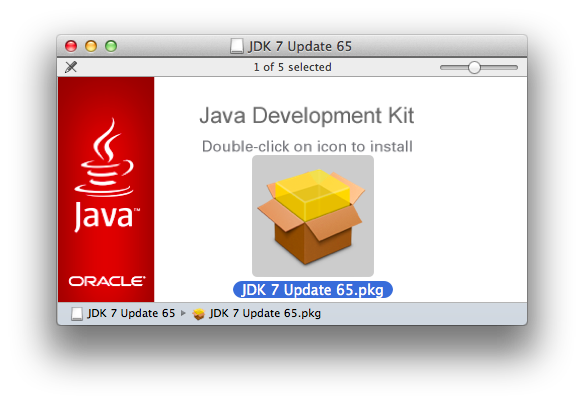

JAVA JDK MAC OS HOW TO
Run /usr/libexec/java_home -h to get more details on how to choose versions. To select a specific version you can simply execute Which selects the latest installed JDK version of the 1.7 branch. At the end we can simply execute the function using We also update the PATH to point to the bin directory of the newly found JAVA_HOME directory. The -v argument tells java_home to return the path of the JDK with the supplied version, for example 1.7. Then it makes some clever use of /usr/libexec/java_home which is a command that lists installed JDK versions.

What the script does is to first remove other JDK versions in the PATH so that they won’t interfere with our new JDK version. RemoveFromPath '/System/Library/Frameworks/amework/Home/bin'Įxport JAVA_HOME=`/usr/libexec/java_home -v PATH=$JAVA_HOME/bin:$PATHĮxport PATH=$(echo $PATH | sed -E -e "s :$1 " -e "s $1:? ") Select the Home directory, and click Next. The directory chooser should show Home and MacOS, and Home should have an icon on it indicating it is a Java home directory. What you do is to edit your ~/.bash_profile and add the following: Type '/Library/Java/JavaVirtualMachines/1.7.0.jdk/Contents' in the File field. After a lot of googling I finally found a simple solution that I’d like to share. I especially noticed this after I installed the JDK 8 early access preview which makes some of the tips that you find on various blogs online useless.
JAVA JDK MAC OS MAC OS
Hope you found this useful and please leave me a feedback so I can hear what you think.Apple decided to remove the Java Preferences application in a software update and afterwards in has been difficult to change the JDK version on Mac OS X. In this post, you have learned how to change Java version on macOS. Try now setting your default Java to one of the different Java versions you currently have installed. If you're doing it in a terminal session, reload it with the source ~/.bashrc. Now with these functions in place you can set the desired versions of Java as active. # set and change java versionsĮcho "rcherara - old java version"Įxport JAVA_HOME=`/usr/libexec/java_home -v PATH=$JAVA_HOME/bin:$PATHĮcho "rcherara - new java version" Type java -version again to see the default Java version changed! Option 2 :Īdd the function java-change to the file ~/.bashrc. Save the file (for VIM, it is x! in a Command mode) and start a new Terminal window. Replace the version_of_your_java with the JDK version you want to set. Code2care How Tos macOS Java Sharepoint Android BlackLivesMatter This site uses cookies to improve your experience with the site.
JAVA JDK MAC OS INSTALL
For example, with VI or VIM, you will type vi ~/.bash_profile How to install native Java JDK or JRE on Macbook with Apple Silicon M1 chip. Now, open ~/.bash_profile with a text editor.
JAVA JDK MAC OS MAC OS X
You will see all installed versions of Java in your Mac OS X or use : $ ls -al /Library/Java/JavaVirtualMachines java_home -V which will output something like the following: In this post, I want to share my setup to switch the active JDK version Option 1: Type java -version and Enter to check which version of Java you have as a default

You can reliably get your current Java version when you run the command: If you have a good recipe on how you switch Java versions on the command line on Windows, please share with the community in the comments. I'm using a Mac, this post will work on a Mac and, perhaps, on some Linux machines. You installed a Java Development Kit (JDK) in your Mac OS X, but what do you do you if your currently installed JDK version is not compatible?However, you probably won't migrate all your projects to it yet and will want to maintain several versions of the JDK on your machine, switching Java versions when needed.


 0 kommentar(er)
0 kommentar(er)
